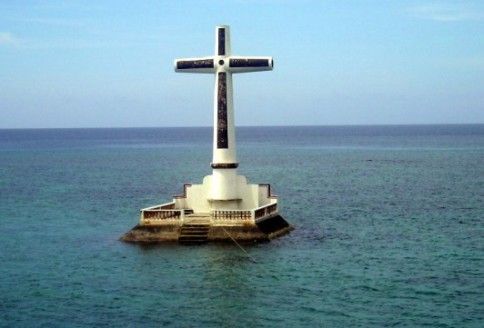Welcome to Camiguin Island
Location:
The central south part of Philippines, north of Mindanao Island.
Capital:
Mambajao, 36.000 people
Area/Surface:
237.95 km²
Foundation Year:
1565
Cities:
Mambajao, Mahinog, Guinsiliban, Sagay, Catarman
Telephone:
+63 88 387 1097
Website:
When to go:
November – May represents the dry season, but we recommend February – May when temperatures are usually constant between 24 and 28° C. Between June and October is the rainy season when there is the risk of hurricanes or typhoons how are they called in Asia.
How to get here:
By car:
There is no possibility to get here by car. You can only rent a car on the island.
By plane:
Close to capital Mambajao situated in north of the island, there is a small airport where you can arrive only by changing in Cebu City. There is a national airport and the only chance to get here by plane is with Cebu Pacific company. A bigger international airport is on the neighbor island Mindanao.
By ship:
The easiest way to get in the island is by ship from Mindanao island (easier to get here by plane). From Balingoan port (north Mindanao) take the ferry to Guinsiliban (45 minutes) or closer to Mindanao (1 hour). You can also take the ferry from Cebu island (12 hours).
Camiguin Island from Philippines
Location and relief of Camiguin Island:
Camiguin Island is the 2nd smallest island from Philippines and is situated in Bohol Sea 10 km north of Mindanao Island one of the biggest in the Philippines Archipelago. In its northern part are Bohol and Han Samar islands, in west is Siquijor island and in east is the same Mindanao Island. The volcanic island with a pear shape has approximately 23 km in length and 15 km in width. The relief is mostly mountainous with the central part dominated by Mambajao mountain and also by Hibok Hibok active volcano which erupted last time in 1953.
Name and history of Camiguin Island:
Camiguin Island, also known as The Island born from fire, got its name from the first inhabitants Manobos, Philippines natives who called the island Kamagong after a tree from this region. At the end of XVI century, Spanish established the first village, but later in the 1670’s and also in the middle of XIX century they established bigger cities. At the beginning of XX century started the war between Philippines and U.S.A, where the last ones occupied the island. On 4th July 1946, when Philippines obtained the independence from U.S.A, Camiguin Island becomes Philippines dependent.
Agriculture, resources, tourism and tourist attractions and objectives of Camiguin Island from Philippines:
So small, so rich in agriculture and resources. Island’s economy is mainly based upon tourism however less developed, but also upon rich resources of sulfur, geothermal energy and fishing. Locals cultivate coco trees, cassava trees, coffee, abaca, but also other cereals. Camiguin Island has in total 7 volcanoes and Hibok Hibok active volcano is a tourist attraction for volcanoes, hiking or climbing lovers. (Find more journeys on blog.worldlifetimejourneys.com) Among the natural attractions and most searched by tourists are crystal lakes, geothermal waters and hot or cold springs (Ardent Hot Spring, Tangub Hot Spring or Saint Nino Cold Spring and Macao Cold Spring), wonderful waterfalls (Katibawasan, Tuasan, Binangawan) and beautiful volcanic landscapes and also a lush tropical forest on the mountains slopes. Also, tourists can enjoy a rich in species fauna and flora comparative with the small surface of the island, but also they can enjoy the beautiful lagoon Tanguines.

The wonderful sunny beaches of Camiguin Island
The White Island, Sunken Cemetery, old houses, old Spanish churches and other attractions of Camiguin Island:
The White Island, much smaller situated only 5 km away of Camiguin Island has the most beautiful beaches from Philippines, with fine sand and a relaxing atmosphere. You can get here by ferry. Among the attractions built by humans, the most important are:
-The Sunken Cemetery, today well marked through a big cross. This was entirely sunken after the eruption of Vulcan Mountain between 1871 and 1875.
-The old houses, rich in ornaments, which date back to the era of Spanish and American colonizers.
-The old Spanish churches, few centuries old, like Santo Rosario Church in Sagay, the ruins of the old church from Catarman, Baylao and San Nicholas of Tolentino Churches from Mambajao capital and others.
-Giant Clam’s Sanctuary, Soda Natural Pool, Moro Tower or Agohay Beach represent other attractions. (Find more journeys on blog.worldlifetimejourneys.com)
Only here, once a year in October is held Lanzones festival, for a tropical fruit which grow here in abundance. So, regardless which tourism you want to practice, this small but beautiful island has many to enchant you with because it has lots for everyone. Regarding the difficulty of getting here specially from far away countries, we recommend you to stay at least one week to feel the atmosphere and to totally relax. Visit Camiguin Island!

Camiguin Island, Sunken Cemetery




